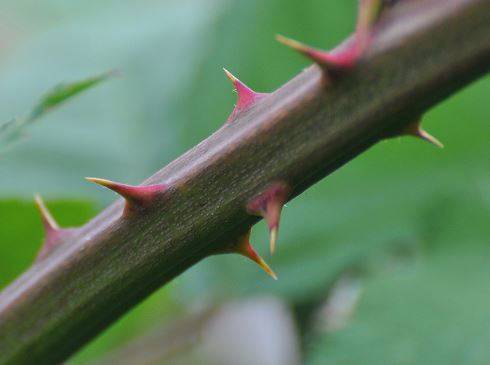A thorny subject
Published 6:15 am Tuesday, September 4, 2018
My job as a forester was a blessing to allow me to get out and enjoy the beauty of our woods and fields and get paid for it. But there were plants out there that would suck some of the joy of being outside. I’m talking about plants that can make you bleed because of their thorns; things like blackberry, escaped rose bushes, and my worst nemesis: sawbriars. I’ve come off wildfires with literally every square inch of my legs scratched from these painful vines.
Thorns is the general term for those stiff, pointy outgrowths on certain plants, and their function is to deter animals from browsing on them for lunch. But to a botanist there are thorns and then there are other types of prickly appendages, based on what they were derived from. For instance, thorns are modified branches. Honey locust and hawthorn grows true thorns. The rose does not produce thorns, but instead its sharps are called prickles, which are derived from modified epidermis (bark) tissue. Blackberry sharps are also prickles. Spines are derived from modified leaves, and the most well-known plant with spines are cacti. Another example of spines are those found along the edge of holly and thistle leaves. Yet another category of things that stick and hurt you are trichomes, those tiny hairs that irritate the skin when brushed against. The best (or is it worst?) example of that is stinging nettle, another plant I’ve had the displeasure to have known often.
Another word used to describe painful sticking plant parts is briar or brier. It’s mostly used when describing plants like sawbriar and its similarly evil cousins catbriar and greenbriar. Since briars are derived from modified bark, they are technically prickles. But “briar patch” is a well-entrenched Appalachian term used to describe a tangled mess of prickly plants.
Trending
Thorns have some historic significance. Genesis mentions them as a punishment for the original sin: “Both thorns and thistles it (the ground) shall grow for you…. (Gen. 3:18). Jesus was forced to wear a crown of thorns at his crucifixion. A familiar symbol of Scotland is the thistle, which originated from a story that an invading Norse army attempting a night attack was betrayed when they encountered thistles in the dark, and their painful cries alerted the Scots.
Steve Roark is a retired area forester from Tazewell, Tennessee.






